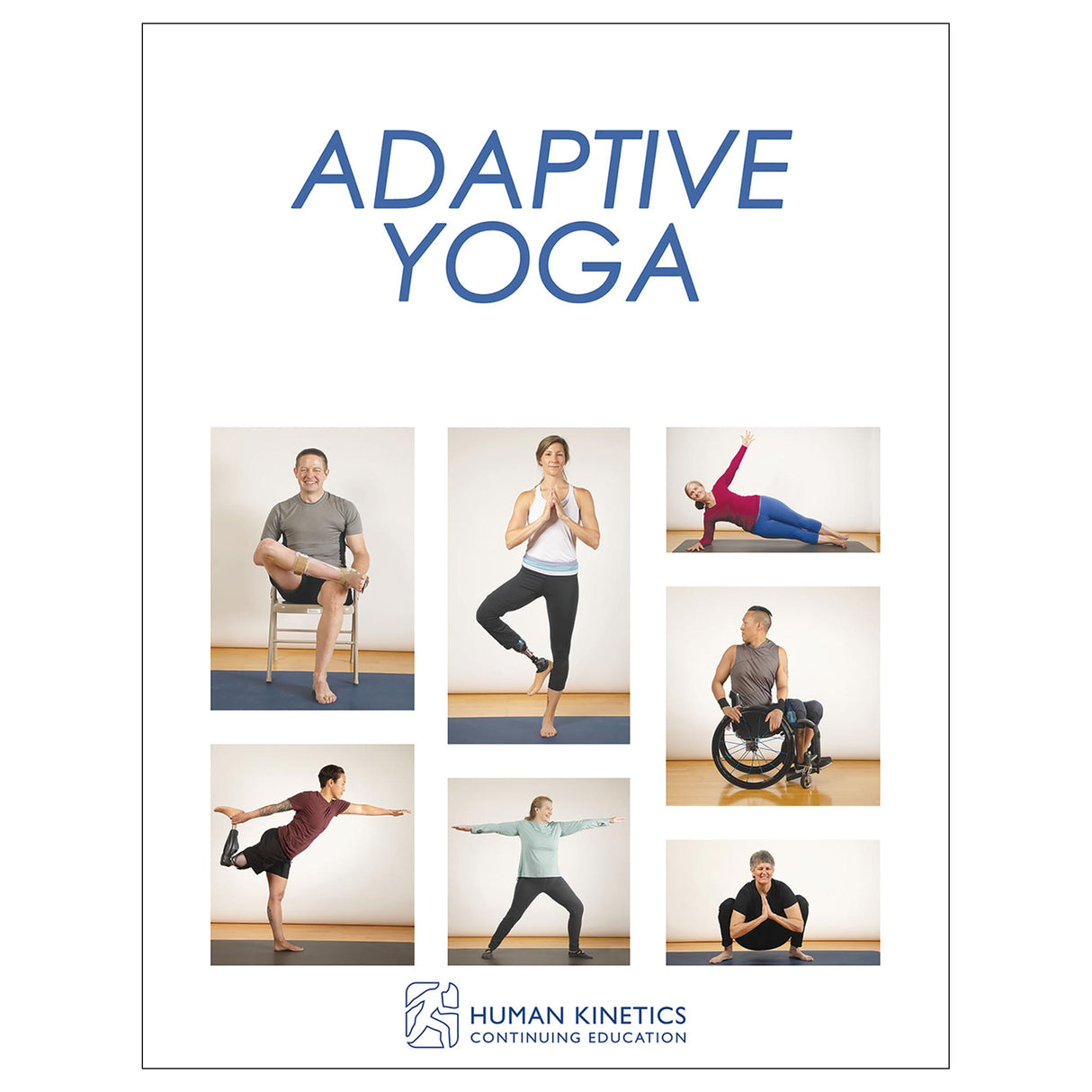Adaptive Yoga Online CE Exam With Ebook
Author: Human Kinetics
$138.95 CAD
Human Kinetics strongly recommends that you complete your exam within the calendar year of your date of purchase to ensure approved credits do not expire for your organization.
- Adaptive Yoga ebook
- Online continuing education exam
The massive growth in the popularity of yoga as a form of exercise and as a method of maintaining whole-body wellness has led to thousands of published research studies confirming what yoga practitioners already know: Yoga relieves stress, improves mental and emotional health, enhances sleep, relieves low back pain and neck pain, promotes weight loss, and even enables smoking cessation. Further study has proven that yoga helps individuals with disabilities improve their functional activities of daily living, recover from injuries, gain mobility, experience less pain, and manage anxiety and depressive symptoms.
Adaptive Yoga takes these studies out of the research labs and onto the yoga mat to empower individuals with disabilities or chronic health conditions to practice yoga effectively and safely. If you work with these special populations as a yoga teacher or rehabilitative therapist, you will find guidance and recommended poses for some of the most common conditions and disabilities, including these:
- Low back pain
- Hip, knee, and rheumatoid arthritis
- Spinal cord injury
- Stroke
- Cerebral palsy
- Lower limb amputation
- Parkinson’s disease
- Multiple sclerosis
After reading the ebook, certified professionals can take the companion CE exam to earn continuing education credits.
Learning Objectives
- Explain the benefits of yoga for people with disabilities and chronic conditions.
- Describe the power of using breathing and mindfulness techniques within an adaptive yoga practice.
- Select poses to perform targeted muscle strengthening or stretching for various disabilities and chronic conditions.
- Choose appropriate poses for individuals based on their disabilities or chronic conditions.
- Explain how to effectively use props with adaptive yoga poses.
Audience
A continuing education course for yoga therapists and instructors, physical therapists, personal trainers, group exercise instructors, and other certified fitness professionals.Preface
Acknowledgments
Introduction
Part I. Principles of Adapting Yoga
Chapter 1. Yoga as Rehabilitation
Chapter 2. How the Body Moves
Part II. Adapting Yoga for Specific Disabilities
Chapter 3. Low Back Pain
Chapter 4. Osteoarthritis of the Hip and Knee
Chapter 5. Rheumatoid Arthritis
Chapter 6. Lower Limb Amputation
Chapter 7. Spinal Cord Injury
Chapter 8. Parkinson’s Disease
Chapter 9. Stroke
Chapter 10. Multiple Sclerosis
Chapter 11. Cerebral Palsy
Glossary
References
About the Authors





